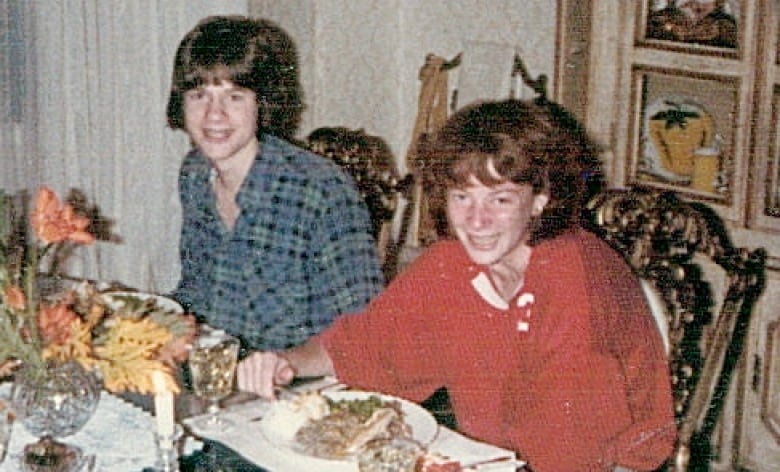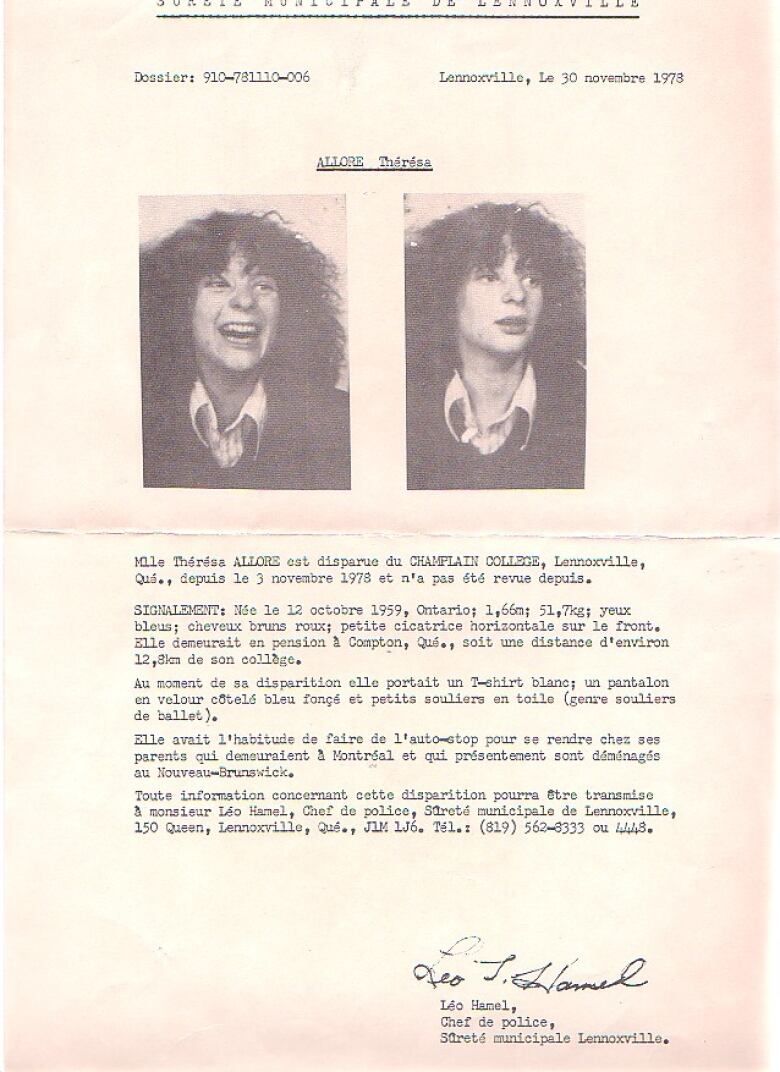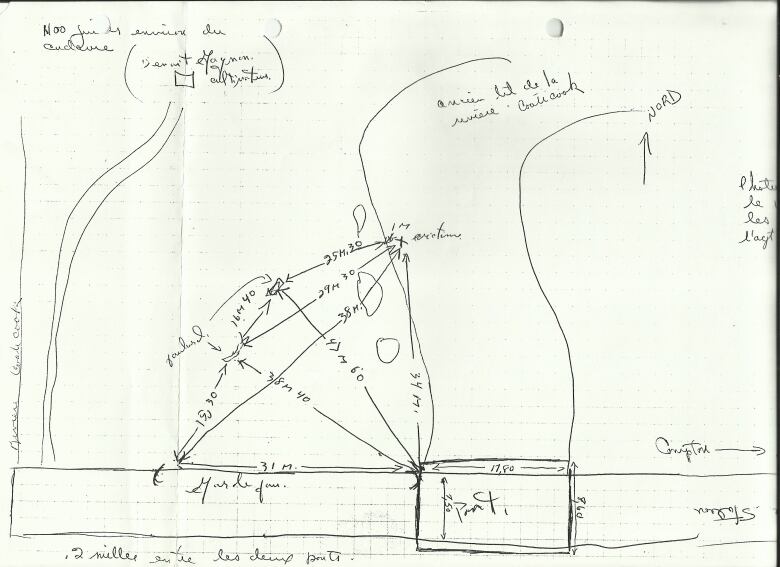Who killed Theresa Allore? SQ reopens investigation into 1978 cold case
19-year-old Champlain College student tops Quebec provincial police list of people missing, presumed murdered

Thequestion of what happened to Theresa Allorehas haunted her family since the 19-year-old, a student atChamplain College in Lennoxville, disappeared in November1978.
Allore'sbody was found on the edge of the Coaticook River near Compton on April 13, 1979. Herremains were in poor shape.
At first, police called it a probable drug overdose. Later, a coroner ruled she had probably been strangled.
Now, 38 years later, Quebec provincial police are re-examining her case.Alloreis first on theSret du Qubec'slist of cold cases more than two dozenpeople missing and believed murdered since 1977.

Her brother John, who was just 14 when Theresa Allore disappeared,has spent years piecing together his own files on his sister's death, even creating ablog devoted to the investigationand other unsolved Quebec cases datingback to the same era.
CBC News spoke to John Allore about the investigation that he considers botched by police and his suspicions his sister may have been the victim of a serial killer.

The disappearance
Friday night, Nov.3, 1978:It had been a warm, dry day in Lennoxville. At Champlain College, students were preparing for the weekend.
Theresa Allore turned down offers from friends, telling them she was going to study. Allore lived in a residence about eight kilometres from the main campus. There was a bus, but if students missed the last bus, many hitchhiked.
Did Allore hitchhike that night?
Another girl told adetective hired by Theresa's family that she had seen her in the residence at 9 p.m., but Theresa did not show up later that night to hang out, as promised, with two other girls.
John Allore has come up with many theories.
There had been a series of sexual assaults on campus that fall: Was Theresa a fatal victim?
The man in charge of her residence was never questioned by police, but he left his job a short time later. The school closed the residence, even though there was a housing shortage at the time. Why?
Alloresays there are still a lot of questions questions not asked by police at the time.

Botched investigation?
Alloreis glad to see his sister's case is being reinvestigated. But he realizes it is the coldest of cases.
After four decades, whoever was responsible is at least in his 60s perhapseven dead. Anyone who might have seen anything may also be long gone.
In 2001, Theresa Allore's family approached police to try to obtain her clothing and any other possessions found with her remains.
John Allore says his father was given Theresa's jewelry and was told there was nothing else. He believes her clothing and other material evidence haveall been destroyedeven though the circumstances of her death are unsolved.
"What's going on here?" Allore asked."Over a span of 40 years, police have systematically engaged in the destruction of case evidence."

SQ won't comment
Police would not confirm what happened to that evidence, and even today, the SQ will not comment on the details of Theresa Allore case.
"It's still an ongoing investigation," said an SQ spokeswoman, Lt. Martine Asselin.
AsselinsaysAllore'scase is still being treated as a suspicious death, not a homicide.
That's despite the findings of the coroner, Michel Durand, who concluded in his April 1979 report that marks found on Theresa Allore's body "could have been marks of strangulation."
Serial killer theory
Allorenow considers himself to bean expert on Quebec crime, especially 1970s murders. He sayshe sees the same mistakes over and over again: botched investigations, lost or destroyed evidence, leads not followed.
Allore believes at least one, maybe two, serial killers were operating inMontreal and theEastern Townships at the time of his sister's death.
"It was good hunting grounds," Allore says. "You had a bunch of students, young adults in CEGEP,all isolated in that one area."
"If you read the history of sexual assaults on women in the Lennoxville area in that time, it's well documented, and it's quite horrendous."

Slim chance of success
So many years afterTheresa Allore's disappearance, her brother is realistic.
"The prospects of solving such an old cold case are slim, if you don't have evidence, if you don't have a confession, if you don't have a witness," he says.
He has his owntheory about the killer.
"I think it was a crime of opportunity," he said."I think she was either stalked or somebody very impulsively took the opportunity of picking her up."
"At some point, an advance was made, she resisted, and they strangled her to death. And they dumped her body a mile away from where she was living in Compton, Quebec."
You have to accept sometimes, he said, that "this one can't be solved. And that's hard especially when it's something that's so personal."
He hopes, at least, he can effect change, and he tries tobe satisfied with "theidea that I will continue to push to get some systemic change in Quebec law enforcement."

Corrections
- A previous version of this story misidentified Andre Allore in a photo cutline.Oct 15, 2020 11:32 AM ET












_(720p).jpg)


 OFFICIAL HD MUSIC VIDEO.jpg)
.jpg)



























































































